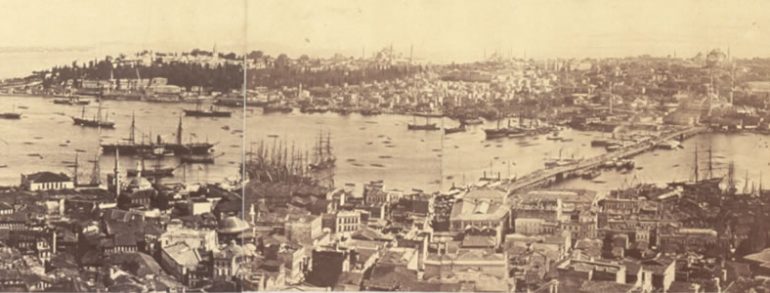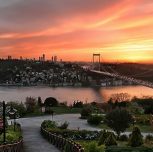Because of its suitable climate, the area of Istanbul is very rich with plant life, which made it very attractive to animals. The availability of these two elements created a perfect environment for human beings needing both to survive. Therefore, settlements started here early on, all the way back to the Neolithic Age. According to the recent discoveries in the historical peninsula, the story of Istanbul goes back to 6500 BC, the Neolithic Age, just one thousand years after the end of the Ice Age.
One of the most known citizens of Istanbul was Byzas who came here with his followers in 667 BC, and established the foundation of the Byzantine Empire. During the reign of Vespasian (69-79), Byzantium became a subject of the Roman Empire. This lasted until 330 when Constantine the Great (306-337) moved the Empire to Constantinople, as he thought that Rome would not be a safe place for the empire. During the reign of Arcadius (395-408) in 395, the Eastern and Western parts of the Roman Empire were separated and the Eastern Roman Empire was established in Constantinople. Because of its attraction, the city was besieged countless times by the Huns in 558, the Avars in 626, the Arabs in 673-677, 717-718, and the Bulgars in 813.
Romans built below ground as well as above. One of the most challenging high-tech investments of the era was building huge churches. Istanbul was the luckiest by having the great church of Hagia Sophia. Rebuilt in 415, the impressive monument still opened its doors to visitors since then. The other challenging high-tech investment of that era were the water transportation projects. Constantinople had one of the earliest examples of the transportation system, consisting of bridge-like gigantic aqueducts, transporting the water using gravity, and cisterns, huge underground water storage rooms supported by ancient columns. Today, the two greatest of them, Valens Aqueduct and the Basilica Cistern, both built in the 4th century, are still well preserved and are ready for the visitors.
The year 1204 was marked as the saddest year in the history of the city. The misdirected Fourth Crusaders invaded the city, and they killed the people, looted valuable relics, destroyed the monuments, simply razed the city, and melted the gold and silver tangibles. The Byzantines had to leave the city. With the help of Venetians, the Latin Empire was founded. It lasted 57 years until 1261 when the Eastern Roman Empire with its Byzantine values was reestablished.
Istanbul was an important city in Christianity, as the four of the first seven ecumenical councils were held in Constantinople. These first seven councils decreed generally accepted doctrines and theological rules during the formation of Christianity. During the Ottoman period, Istanbul became the center of Islam, as the Ottomans controlled all the Muslim territories from the Middle East and westward.
On 29 May 1453, Sultan Mehmed II “the Conqueror” captured Constantinople and declared Istanbul the new capital of the Ottoman Empire. Mehmed II’s first duty became to revitalize the city by creating a cosmopolitan society compiled from different religions, repairing the damaged Byzantine monuments, rebuilding the infrastructure, and creating new trade centers. They converted unattended churches into mosques. Therefore, old monuments are still vital, as they have been under constant care.
In later centuries, following sultans and wealthy people built gorgeous palaces, mosque complexes and other monuments, such as the palaces of Topkapı, Dolmabahçe, Yıldız and the mosques of Süleymaniye, Sultanahmet and Yeni Cami. Together with the older monuments, such as Hagia Sophia, Basilica Cistern, and Theodosius Walls, Istanbul became a center of architecture.
The end of the 19th century marked the Young Turk Revolution, and a serious event lead to the ending of the Ottoman Empire. After World War I, Istanbul was briefly occupied by the British, French and Italian troops, which ended by the Treaty of Lausanne in 24 July 1923.
Mustafa Kemal Atatürk, the founder of the Republic of Turkey, declared the establishment of the independent state in 29 October 1923. He moved the capital to Ankara, and Istanbul stayed as the commercial center of the country.








